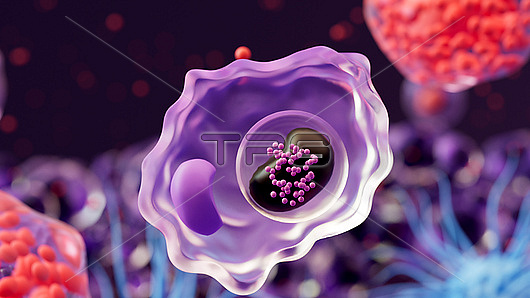
Illustration showing enzymes (small pink spheres) and tattoo ink (black) within a vacuole (fluid-filled sac) inside a type of white blood cell known as a macrophage (purple). During tattooing, ink is injected into the second skin layer, known as the dermis, and triggers an immune response. Macrophages then engulf the ink, in a process known as phagocytosis. Enzymes are then added to the vacuole by an organelle called a lysosome, but these enzymes are unable to break ink down and it remains intact inside the cell. When the macrophage dies, the ink is released and is re-captured by more macrophages. This cycle is how the ink remains in the skin, and tattoos become permanent.
| px | px | dpi | = | cm | x | cm | = | MB |
Details
Creative#:
TPG35038923
Source:
達志影像
Authorization Type:
RF
Release Information:
須由TPG 完整授權
Model Release:
N/A
Property Release:
N/A
Right to Privacy:
No
Same folder images:

 Loading
Loading